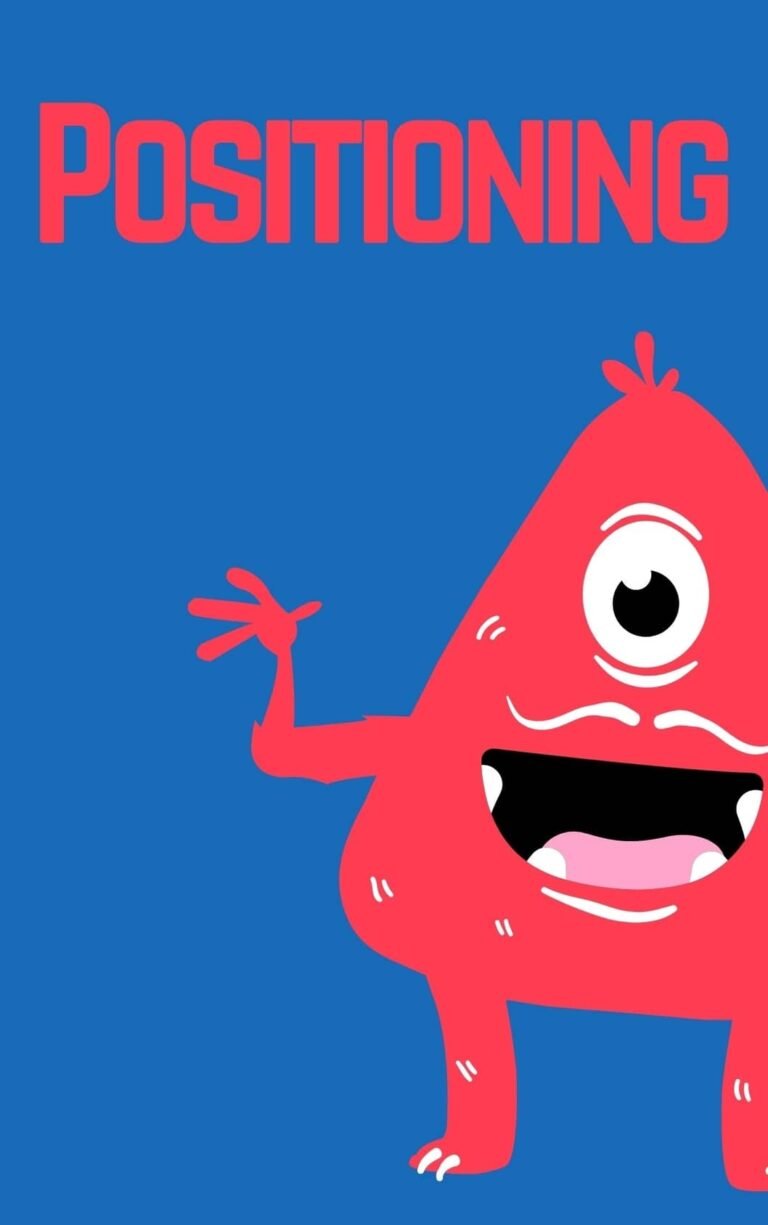The Great Influenza Summary
The Story of the Deadliest Pandemic in History
John M. Barry
Rating: 8.0
“Monumental… an authoritative and disturbing morality tale.”
-Chicago Tribune
The revolution in medical training of the early 20th Century came just in time to help U.S. deal with the 1918 influenza pandemic.
Contents
The Meltdown
The great influenza pandemic began in 1918 and ended in 1920. Worldwide, the virus itself caused an estimated 20 to 100 million deaths most of which occurred between September 1918 and early 1919. In the U.S., with about 105 million people at the time, the virus killed approximately 675,000. Conventionally influenza causes its mortality among the elderly and infants due to their inadequate immune defense systems. But the 1918 pandemic was highly unusual in that approximately half of the casualties were young men and women in their 20’s and 30’s. As many as 8 to10% of all young adults may have died of influenza.
The 1918 virus killed more people in absolute numbers than any other sudden outbreak of disease in history. During the 1300’s, the Bubonic plague or Black death, a uniformly fatal bacterial infection caused by Yersinia pestis and spread by flea bites, killed a higher percentage, more than 25%, of the European population, but less in absolute numbers. In perspective, the 1918 pandemic influenza virus killed more people in 24 weeks than AIDS has so far killed in 24 years, and more people in a year than the Bubonic plague killed in a century.
The virus was endowed with unchecked brutality, virulence and malice. It brought havoc to its victim’s body, particularly the lungs. Many of those afflicted had an irrepressible cough and bleeding. Blood came out mostly from the nose, but in many cases also from the ears or from the mouth as a result of the coughing. The body was said to have ached to the point that it felt as if the bones were breaking. The skin of the patient changed color to blue, violet, or even black. At times, some Caucasian patients could not be distinguished from naturally black people. The primary cause of death was hemorrhaging pneumonia. One army report noted “fulminating pneumonia with wet hemorrhagic lungs,” “fatal in from 24 to 48 hours.”
Another unusual aspect of the 1918 influenza was that the virus struck its victims suddenly. Many people remembered precisely the moment that they first felt ill. Around the world people dropped from their horses or suddenly collapsed while walking. This didn’t mean that they collapsed at the moment they were infected. The incubation time of the influenza virus was about 24-72 hours compared to 2-10 days for the Black Death. The virus needed about 24 hours to infect a cell, replicate itself into millions of copies, and release its progeny. This did mean that after the virus had replicated, it subdued its victims in a dramatic, uncompromising fashion. Death could come rapidly. A person could appear well at one moment and collapse and die in the next moment.
In Philadelphia, priests drove horse drawn wagons, going from house to house, calling upon people who lived in horror and grief to open their doors and bring out dead bodies, like today’s calling for recycling of papers and cans. What was happening in Philadelphia was happening everywhere in the US and the world.
The Emergence of the 1918 Pandemic Virus
While definitive evidence is lacking, some epidemiologists and scientists including Nobel Laureate Frank Macfarlane Burnet, who devoted his lifetime research to influenza and the immune system (he won the Nobel Prize for his immunology research in 1960), believed that the pandemic likely originated in the United States, most likely in Haskell County, Kansas in early 1918. Dr. Loring Miner cared for violent influenza cases with pneumonia and severe body ache and headache in late February and early March 1918. The virus might have been carried to a huge nearby army base, Camp Funston, a part of Fort Riley, and from there to Europe, especially France. When it reached the army base and into France and Spain, the virus might have mutated to become a milder variant.
In spring 1918, it was spread throughout Europe, where in Spain it was called Spanish Flu. From there it went on to nearly every continent including South America, Asia, Africa, and Australia. Many people were sick but severe pneumonia and death were uncommon. The spread of the virus was greatly facilitated by the movement of the armies in World War I. Soldiers were disproportionately more affected by the virus due to their close and confined contact with each other. Soldiers were transported to kill the enemies. The virus made them much more lethal than they ever would have believed.
During the spring and summer of 1918, the virus had been circulating and constantly changing all over the world. In late August 1918, the virus turned into a much more deadly form and a new wave of a severe pandemic struck the globe. In the ensuing months, the influenza plague devastated the world. In the U.S., the severe influenza pandemic first spread among the army bases when soldiers returned from Europe and then it passed on into civilians. A case exemplifying the explosive nature of the pandemic: The Liberty Loan Parade, one of the greatest parades in the history of Philadelphia, took place on September 28, 1918. At the time, the Philadelphia Navy Yard already had 1,400 soldiers hospitalized with influenza and the city hospitals had admitted 200 more cases including 123 civilians. In the days after the parade, Philadelphia’s hospitals were overwhelmed with hundreds of thousands of new cases of influenza infected by the severe type of virus found in the Navy Yard. Hundreds, eventually almost 1,000, died each day for several weeks.
The Great Influenza Virus
Haskell County is located in southwestern Kansas (with a population of 3,976 in 2000). The area was, and still is flat and treeless and was a location where livestock and crops and land were everything, and “the smell of manure meant civilization.” Farmers were living in close proximity to abundant numbers of fowl, pigs, and cattle. At times, the riverbeds were dry and cracked and at other times the land was flooded with torrents of water. In summer, the unforgiving sun scorched the land and beneath, while in winter the gales ran unopposed for hundreds of miles on the flat surface bringing wind chills to 50 degrees below zero. Violent storms and tornados were common and promoted an even more pronounced mixing of humans with fowl and other animals. Since birds are the natural habitats of influenza virus, the close human-fowl relationship and the harsh environment made it easier for fowl to pass the virus onto humans.
There are many more species of influenza in birds than in humans. Some strains of the virus can also cause diseases in birds but they are different from those in humans. Influenza virus infects the gastrointestinal tract in birds and there is usually a large quantity of the virus in bird droppings. However, bird flu virus does not usually infect humans. Even under rare circumstances when a person does get infected (being exposed to a large number of bird flu virus, for example), that virus does not normally pass from one human to another. Bird flu may infect other animals, particularly pigs, and the virus may be transmitted from pigs to humans. The real danger is that the virus that infects birds or pigs, mutates and obtains the ability to effectively infect human beings. Pandemics often follow.
Influenza and other viruses such as coronaviruses are responsible for 90% of the infections of the upper respiratory tract. Bacterial infection is only a small proportion. Coronaviruses cause the common cold and sore throats and were also the cause of the SARS outbreak in 2002. Influenza virus infects cells lining the surface of the respiratory system and is usually restricted to the upper respiratory tract before the immune system wipes the cells/virus out. Depending on the preparedness of a person’s immunity against the invading influenza virus, the virus may penetrate deeper into the lung and cause pneumonia. Under normal circumstances, a person would eventually gain the upper hand and recover fully within 10 days. Nevertheless, influenza virus kills about 36,000 people every year in the United States even without outbreaks of mild epidemics or pandemics. These deaths usually occur in the very old and the very young with immune systems that are compromised or not fully developed.
Viruses by themselves cannot sustain life and are “lifeless beings” — they do not consume anything, no energy and no oxygen. However, after gaining access to their host, they become “alive” and malicious and selfish — they hijack cells for their own benefit, namely replicating itself, the one and only thing that a virus does. It doesn’t even do this by itself. Under the commands of the viral genes, the host cell does all the work for the virus.
Like a computer virus whose only purpose is to replicate itself under the commands contained in 2 digits (1 and 0), a virus replicates itself under the commands contained in the 4 letters of DNA/RNA (A, C, G, T [U instead of T in RNA]). Genes direct the actions of a cell to self-replication. There are two types of viruses: those that possess a DNA genome and those with an RNA genome. Due to the proof-reading mechanisms associated with a DNA polymerase, errors occurring during DNA replication are rare. This is not the case with RNA viruses, and many mutations occur in the viral genome, and this is especially so with influenza and HIV. The influenza virus mutates the fastest and when the 100,000-1,000,000 progeny viruses are ready to burst open (and kill) the host cell, 99% of them are so greatly changed that they are defective and incapable of infecting another cell and reproducing again. The remaining 1,000-10,000 viruses are still capable of infecting other cells.
Influenza virus assumes a spherical shape and is about 1/10,000 of a millimeter in diameter. There are two kinds of protein spikes protruding from the surface: hemagglutinin and neuraminidase. Hemagglutinin binds to sialic acid on the surface of cells and triggers the internalization of the virus particle into cells. Neuraminidase has an unusual function, thanks to the virus’s thoughtfulness, in that it chops up and destroys the sialic acid on the surface of the cell that it has invaded to make sure that when progeny virus particles leave the cell, they are not recaptured by the sialic acid on the membrane of the now dead cell. Mutations in the genes encoding these two molecules dictate the virus’s ability to invade and escape from the host’s immune system. The host’s immune system relies on antibodies to these two molecules, especially the hemagglutinin to neutralize the virus. When the virus has these two molecules mutated to the extent that host’s existing antibodies can no longer effectively bind and neutralize the virus, the virus spreads unchecked.
There are 15 known distinct hemagglutinin variants and 9 of the neuraminidase variety. Influenza can form distinct strains by having different combinations of hemagglutinin and neuraminidase variants. For example, the virus causing the 1918 pandemic was designated H1N1, and H3N2 is the form which has been circulating in recent years. The gradual change of the virus, known as antigenic drift, happens all the time. When a bird virus strain changes enough that it can infect human cells directly or indirectly, it becomes a new identity or strain. In 1997 in Hong Kong, a virus designated H5N1 was transmitted directly from chickens to humans and infected 18 and killed 6 people. Fearful of a catastrophe, Hong Kong public health officials ordered the slaughter of each and every one of the 1.2 million chickens in Hong Kong. In 2003 in the Netherlands, Belgium and Germany, a new virus designated H7N7 emerged on poultry farms and infected 83 people and killed one. The new virus also infected pigs. Public heath authorities ordered the killing of about 30 million poultry and many pigs. These decisive and drastic actions are necessary so that no further mutations and adaptations can occur to eliminate the source of the virus and reduce the chance of starting a pandemic.
Medical Education and Medical Research in U.S. Prior to Pandemic
The book is as much about the history of and pronounced revolution in medical education preceding the 1918 influenza pandemic as it is about the pandemic itself. In the years up to the end of the 19th century, medical education in the U.S. was backward and of low quality compared to European institutions. After Charles Eliot became the president of Harvard in 1869, he wrote, “The whole system of medical education in this country needs thorough reformation. The ignorance and general incompetency of the average graduate of the American medical schools, at the time when he receives the degree which turns him loose upon the community, is something horrible to contemplate.” When he tried to instigate some kind of reform, he met resistance from the faculty. Professor Henry Bigelow, the most prominent faculty member at the time, complained to the Harvard Board of Overseers, “[Eliot] actually proposes to have written examinations for the degree of doctor of medicine. I had to tell him that he knew nothing about the quality of the Harvard medical students. More than half of them can barely write. Of course they can’t pass written examinations…”
Harvard Medical School was one of the best at the time (and is the best today according to U.S. News and World Report), so one can imagine what it was like in the rest of the country. By the 1870’s, European medical schools gave students extensive medical and scientific training, and medical school funding was subsidized by the government. In American medical schools, student tuition was the only source of income for faculty salaries and operating expenses. There were no admission standards other than a student’s ability to pay the tuition. No medical schools gave students a chance to perform autopsies or even see a patient. Not even one medical school in the nation had any kind of research program, let alone laboratories.
In 1873, Johns Hopkins, a Quaker, died and left a $7.0 million trust, $3.5 million to found a university and $3.5 million for a hospital. The trustees moved courageously and ambitiously to build a university that would rival the best of the European Centers of medical research, especially the German universities, requiring both rigorous admission standards and course work and it would be research-oriented. On September 12, 1876, at the opening ceremony of the launching of the Johns Hopkins University, keynote speaker Thomas H. Huxley, a brilliant scientist and thinker as well as being president of The Royal Society of Great Britain, advised its audience to “sit down before a fact as a little child, be prepared to give up every preconceived notion. Follow humbly wherever and to whatever abysses nature leads, or you shall learn nothing.”
Perhaps more relevant is the opening of the Johns Hopkins School of Medicine in 1893 and contributions by its first dean William H. Welch. The School itself paid faculty salaries, required admission standards of a college degree, a background of science courses in college, and fluency in both German and French (in addition to English). Welch worried that there wouldn’t be enough students coming. To his pleasant surprise, many qualified students applied and were admitted. Welch accomplished three things: he recruited both young and outstanding, mostly European-trained physicians as the founding members of the medical school including William Osler, William Halstead and Howard Kelly. Secondly, he taught and inspired a large number of students and trainees who would go on to become the force of reform in other medical institutions in the rest of the country. Thirdly he was the chairman of the board of scientific directors of two of the most prominent medical foundations at the time: The Rockefeller Foundation for Medical Research and the Carnegie Foundation. He thus influenced the distribution of scarcely available research funds.
By 1918, the model of the Johns Hopkins School of Medicine had been emulated in major medical schools throughout the nation. Since 1893, when the School was launched and under the leadership of Welch until the year 1918, there was a true revolution sweeping the medical education landscape in the nation. Charles Eliot, president of Harvard University, Victor Vaughan, president of University of Michigan, and William Pepper, president of University of Pennsylvania championed the change. The quality of patient care and scientific research in major medical schools had reached the level and even surpassed some of the prominent European medical schools. It was truly a remarkable transformation. This revolution in medical education prepared America for the onslaught of the 1918 influenza pandemic. Without this revolution, the 1918 pandemic could have been much more devastating that it was.
The Race to Find the Pathogen and the Cure
The race to discover the pathogen and the cure commenced throughout the world in 1918. Many eminent scientists including Emile Roux of the Pasteur Institute in France and Richard Pfeiffer in Berlin, Germany took part. Scientists with the slightest background in infectious diseases turned their attention and energy towards researching this plague. In the United States, Welch, Army General Surgeon William Gorgas, and Rockefeller Institute president and scientist Rufus Cole, among others, spearheaded the chase. Cole had successfully developed a vaccine for pneumonia just before the pandemic. Scientists needed to elucidate at least the following three aspects of the pandemic: the epidemiology of the disease (how it was spread), the pathology (what damage it caused in the body), and the pathogen.
In the United States, prominent scientists at the forefront of the race included Oswald Avery at the Rockefeller Institute, William Park and Anna Williams at the New York City Department of Public Health, and Paul Lewis at the Henry Phipps Institute of University of Pennsylvania in Philadelphia. Prior to joining and leading Henry Phipps Institute, Lewis was a scientist at Rockefeller where he discovered that polio was caused by a virus and developed a vaccine for it that is 100% effective in monkeys.
In Europe, Richard Pfeiffer, one of Robert Koch’s disciples and scientific director of the Institute for Infectious Diseases in Berlin had isolated a new bacterium, which he confidently named Bacillus influenzae (later it was renamed Hemophilus influenzae), in most of the patients. However, it was not found in all patients. Scientists in other parts of the world were also not uniformly able to isolate the bacteria from patients. In addition, vaccines produced against the bacteria did not offer unequivocal protection. Pfeiffer was of enormous stature and his reputation was perhaps just under Louis Pasteur, Robert Koch, and Paul Ehrlich. There were considerable debate and even agony about whether the Bacillus influenzae was indeed the pathogen. It was not. Lewis and his protégé Richard Shope continued their search for clues. In 1929, Lewis died from yellow fever in Brazil on a research assignment for the Rockefeller Foundation to study the very disease that killed him. Based on Lewis’s methodology of using a filter to separate the smallest pathogens (e.g., a virus) from bacteria, Shope discovered the cause of influenza in pigs and found that it was a virus. In 1931 (with work performed in the late 1920s), he published his findings, co-authored with Lewis, in the Journal of Experimental Medicine, the most prestigious medical research journal at the time. The journal was published by Johns Hopkins and edited by Welch. Later it was discovered that the pig influenza virus was a direct descendent of the 1918 pandemic virus since antibodies from survivors of the 1918 pandemic was able to protect pigs from infection of the swine virus. Later in 1933, in a minor influenza outbreak in England, Shope’s friend and collaborator C.H. Andrews and other colleagues, Patrick Laidlaw and Wilson Smith using Shope’s methodology, found the human influenza
A summary of “The Great Influenza” by John M Barry. Check out Make Me Read for summary of the best business books.







Wow! This could be one particular of the most beneficial blogs We have ever arrive across on this subject.
Actually Excellent. I am also a specialist in this topic therefore I can understand your hard work.
durability and technology of the sub